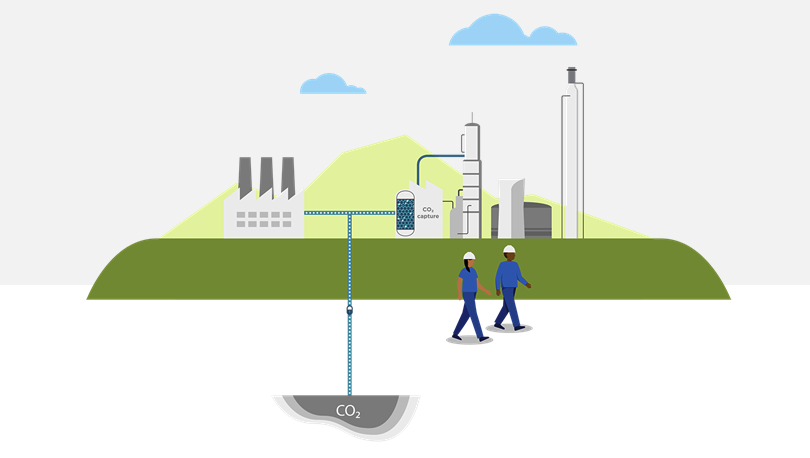Industries that have a difficult time lowering their carbon intensity have options including carbon storage and alternative fuels.
What do steel, cement and chemical production all have in common?
They’re sectors that are trying to meet increasing demand while lowering their greenhouse gas emissions. And it’s not easy.
Take a look:
- Demand for chemical products, such as plastics, is growing, and the demand for primary chemicals has increased significantly. The chemical sector is the third-largest industrial emitter of direct carbon dioxide (CO2) emissions.
- Demand for cement is expected to grow by 2.4% a year until 2026. According to the IEA (International Energy Agency), direct CO2 emissions from cement have been mostly flat in recent years, but declines of about 3% annually through 2030 would be needed to meet emissions reduction targets under the IEA Net Zero Emissions by 2050 Scenario.
- The demand for steel is projected to rise 30% by 2050. Total CO2 emissions from the iron and steel sector have risen over the past decade, in large part because of increased demand.
These industries—steel, power, chemical, cement and refining to name a few—are considered hard to abate, meaning it’s difficult to lower their greenhouse gas emissions.
This also means they will need creative solutions in order to decrease their carbon intensity.
what we’re talking about
The production processes for hard-to-abate industries such as steel and cement are energy intensive, release carbon as a byproduct or both. The challenge for these industries, which are essential to modern life, is to produce more while emitting less.
So what can they do to lower their carbon emissions?
consider this
Several factors can go into deciding how emissions should be abated, including whether to reduce them during production, to deal with them after they are produced or both.
One potential solution for addressing the carbon that is being emitted is carbon capture, utilization, and storage (CCUS). Considerations for choosing any abatement option include:
- How to capture, transport and store the emissions if a company is looking to CCUS.
- Which alternative fuel sources, such as hydrogen, can give similar results to what they’re already using.
- What policies there are at the local, state and federal levels that might enable or restrict the chosen emission reduction effort.
- The timing to set up emission reduction equipment or technology vs. how long a facility is expected to operate.
- The cost of investing in abatement technologies and equipment.
